New Hampshire’s invasive species regulations currently prohibit the collection, sale, transport, distribution, propagation or transplantation of prohibited invasive plants. Invasive plants are non-native plant species that spread rapidly by seed or vegetative means and pose a threat to agriculture, forests, wetlands, wildlife, and other natural resources of the state. Of the thirty-five upland plant species on the current (2017) Prohibited Invasive Species list (Table 1), three were historically popular and widelyplanted shrubs or trees: burning bush (Euonymus alatus), Japanese barberry (Berberis thunbergii) and Norway maple (Acer platanoides). It is illegal in New Hampshire to collect, transport, sell, distribute, propagate or transplant any living or viable portion of any listed prohibited invasive plant species including all of their cultivars, varieties, and specified hybrids, but removal of preexisting plants is not required by the law.
An additional plant list, known as the Watch List (Table 2), identifies species of additional concern that do not currently meet the criteria for the prohibited list. Invasive aquatic species are listed elsewhere, as noted at the bottom of Table 2. For information on identification and removal of invasive plants in New Hampshire, please see the NH Division of Plant Industry’s webpage. Neighboring states have their own invasive species regulations which may differ from New Hampshire’s.
As people become aware of environmental concerns related to the spread of these plants into native and naturalized areas, many property owners actively seek suitable plant replacements for their landscapes. UNH Extension worked with green industry groups to develop the following lists of suggested alternatives for consumers and landscapers. The lists are not meant to be comprehensive, but include several adaptable plant choices which are readily available at nurseries and have performed well in New Hampshire landscapes. While recognizing that no single plant can substitute directly to perform all the functional and aesthetic qualities of the invasive plant of concern, the list provides suggestions suitable for a range of site conditions and landscape functions. Other plants may suit the purpose as well.
Alternatives for Burning Bush (Euonymus alatus)
Burning bush was for many years a popular component of the landscape, valued for its brilliant red fall color. Its adaptable nature and stress tolerance allow it to thrive in shade or sun and throughout a wide range of soil conditions. It has a dense, widemounded or spreading form up to 20’ wide and 20’ high at maturity. The ridged bark is an identifying characteristic. Its prolific seeds are eaten and spread by birds and other wildlife. Consider the following alternatives when selecting alternative large shrubs for fall color. All are deciduous shrubs.
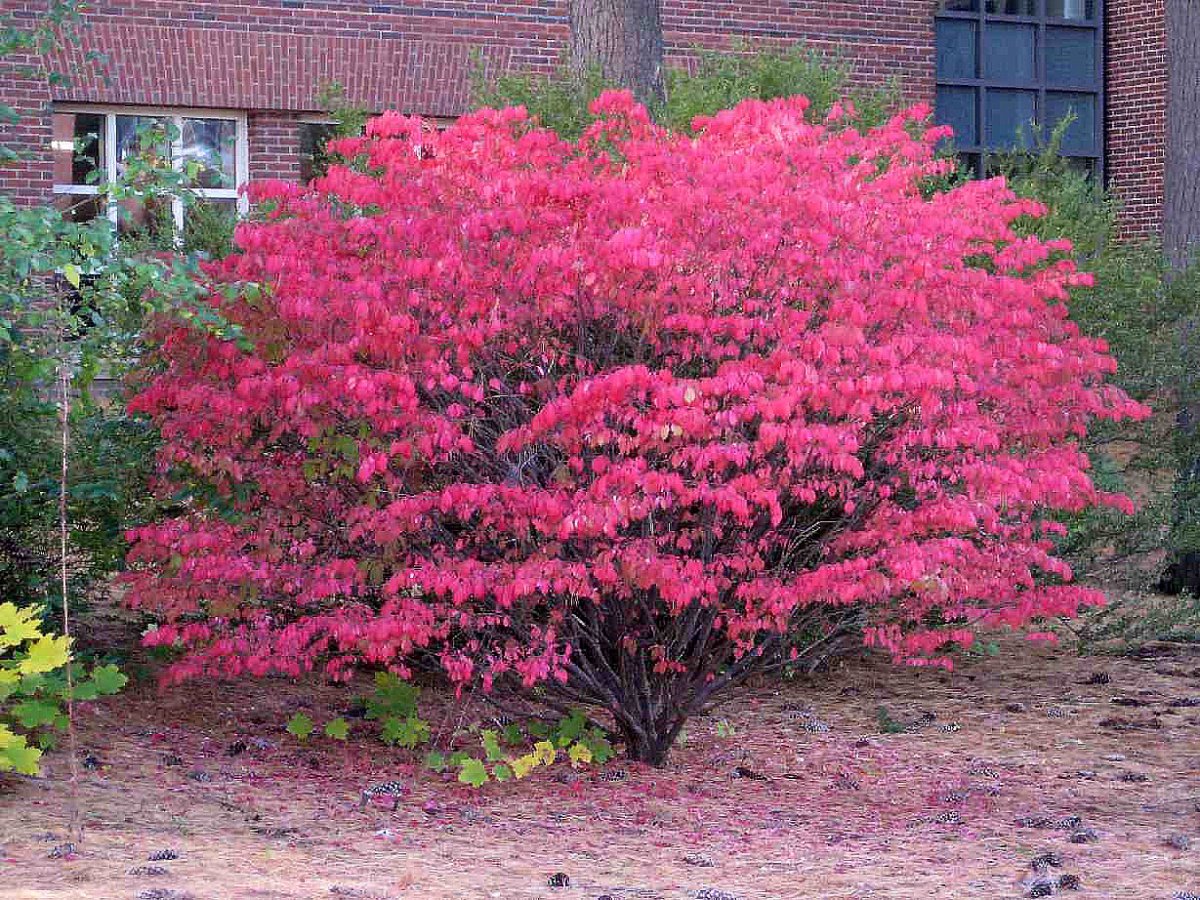
Highbush-cranberry (Viburnum trilobum) is not related to true cranberry, but has similar berry-like fruit that are good food for wildlife and sometimes used by humans in jams or sauces. This native plant is hardy throughout the state. Coarse in texture and form, it is adaptable to most soils, and likes full sun or partial shade. While the fall color is subdued compared to burning bush, it has multi-seasonal interest with large white flower clusters in spring, clusters of attractive fruit that may last through the winter, and burgundy fall foliage. Mature size varies according to the cultivar, but plants may grow 8’-10’ tall and wide. A word of caution, however--the viburnum leaf beetle, an invasive insect, does find this species an attractive host and may defoliate the plants in some years.
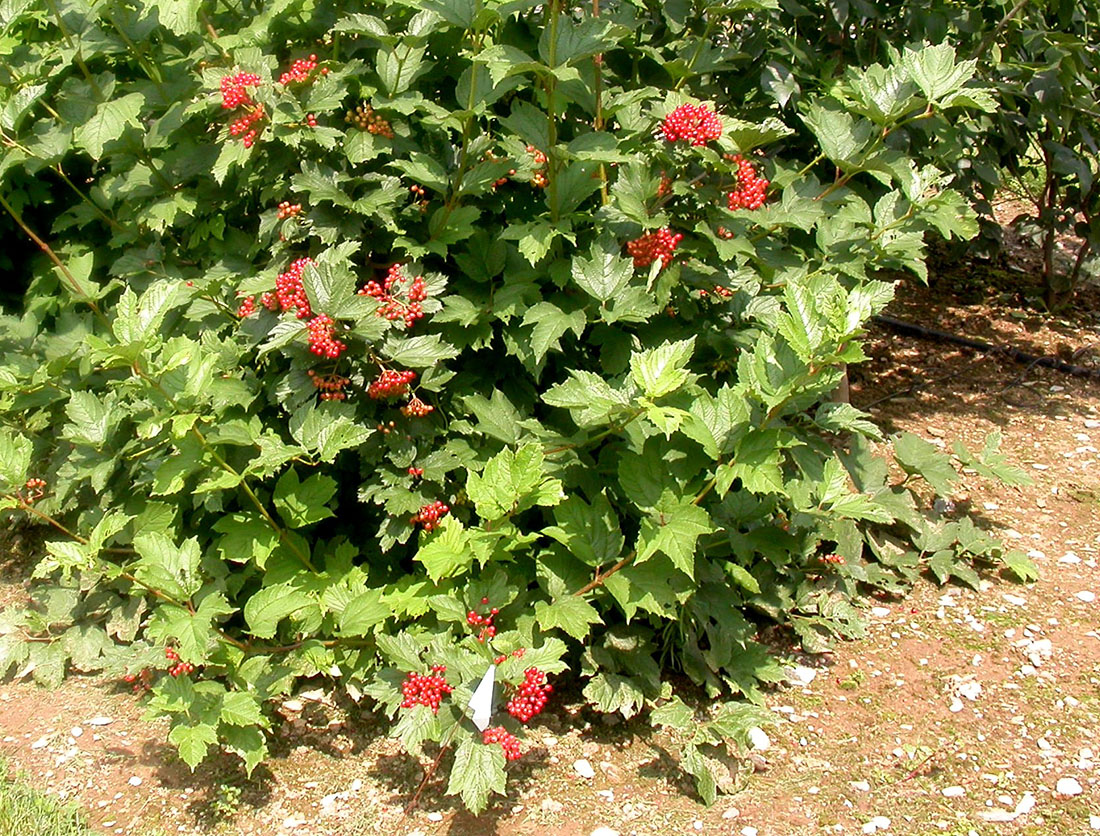
Highbush blueberry (Vaccinium corymbosum) Grown primarily for its large edible berries, highbush blueberry also makes an excellent landscape plant in the right conditions; i.e., moist, acidic soils in full sun to partial shade. Blueberries should be mulched each year to protect the shallow roots from drought or cold exposure. Native, cold hardy to zone 3, and slow in growth, the plants develop an upright, spreading form, up to 12’ tall and 6’-8’ wide. Fall leaf color may be red or orange, depending on the variety. This is one of the best plants for wildlife including insects, birds and a wide array of mammals.
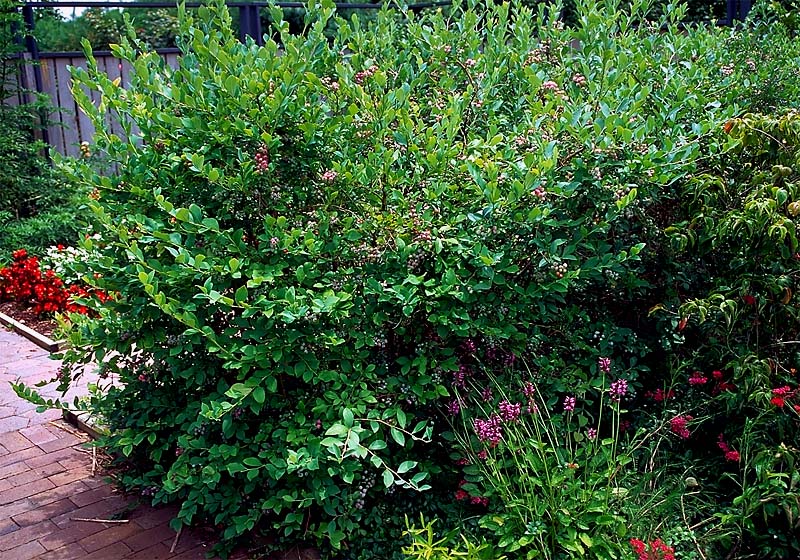
Redvein enkianthus (Enkianthus campanulatus) Fall color varies, ranging from true gold to bright red, but all are very attractive. In addition, lovely clusters of pink to white bell-shaped flowers appear in spring. A slow-grower at first, this plant has a unique upright, open habit when young and fills out as it matures, reaching 6’-10’ tall and half as wide. It requires acid, moist soil for best growth, is best in partial shade, and is hardy to zone 4. Native to Japan.
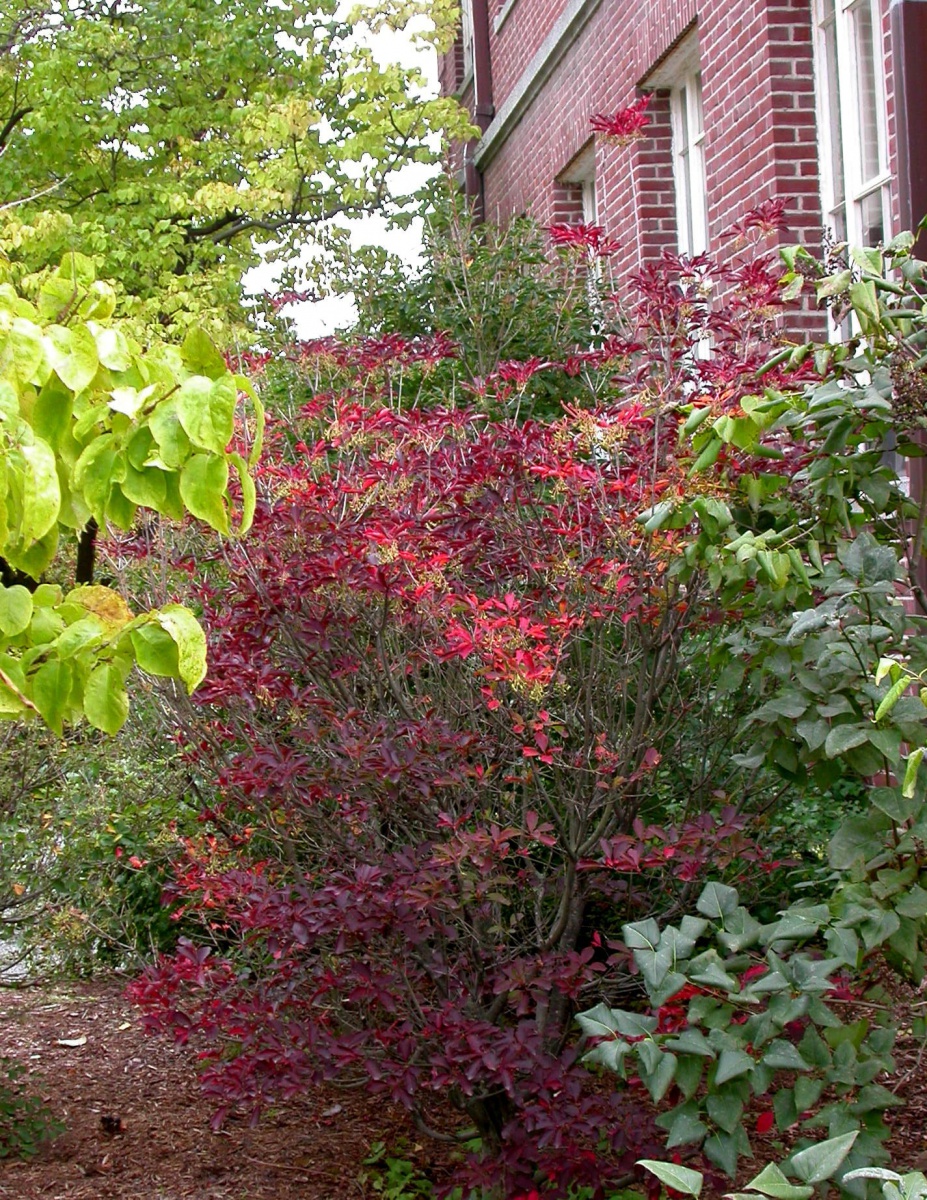
Fothergilla (Fothergilla gardenii or Fothergilla major) Fothergilla is an underused plant, with great fall foliage in shades of yellow, orange and red, all on the same plant. It also has fragrant, white bottlebrush flowers in spring, and a dense rounded form with medium texture. F. gardenii (2’-4’ high and wide) is a smaller version of F. major, which can grow 6’-10’ and form colonies from suckers. Like Enkianthus, it needs acid, moist soil, and full to partial sun. Native to the southeastern U.S., it may not be hardy north of zone 5.
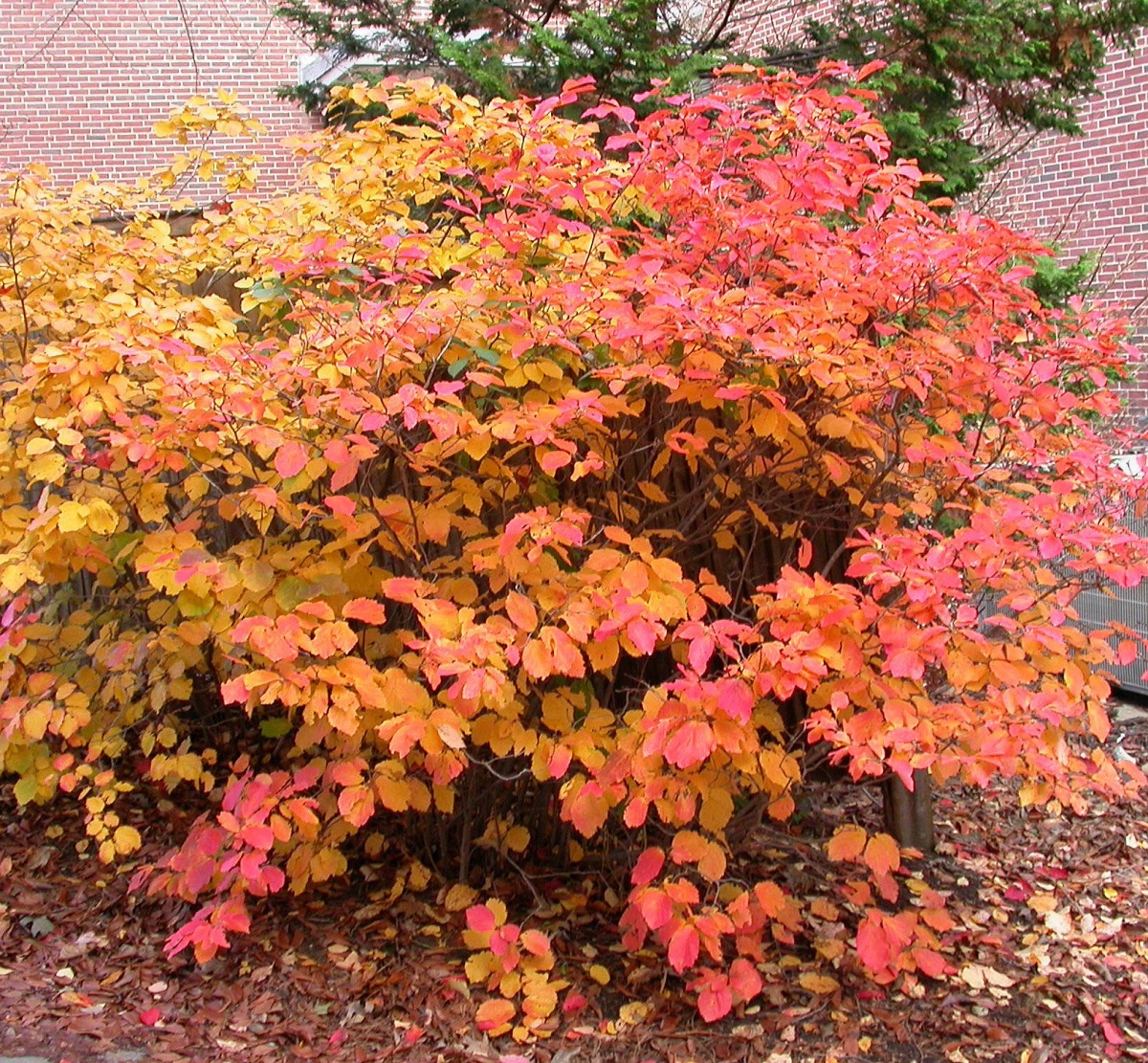
Red chokeberry (Aronia arbutifolia) Native to New England, red chokeberry is an attractive, slow- growing plant, 6’-10’ high and 3’-5’ wide, forming colonies through suckers. It is adaptable to most soil conditions from dry to wet, does well in sun to partial shade, and looks best in a naturalistic planting. It has attractive red berry-like fruit (not considered edible by humans, but serving as a late winter food source for birds) and red fall foliage. ‘Brilliantissima’ is a common selection often said to equal burning bush in fall color. Hardy to zone 4.
Alternatives for Japanese barberry (Berberis thunbergii)
Japanese barberry is a durable, dense mounded, lowmaintenance plant, most popular for its red or purpleleaved cultivars which add color to the shrub border. Potential alternatives include some plants that provide the red color but not the compact form, and others that provide the desired form but not the red color. Unfortunately, it’s hard to find both in one plant.
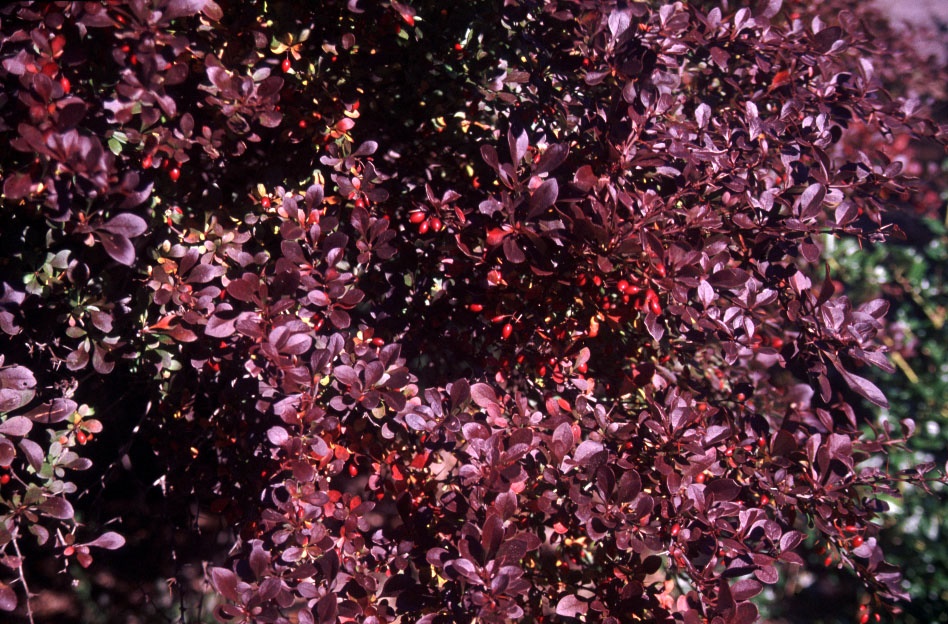
Weigela (Weigela florida) Old fashioned weigela tends to be a spreading, dense, rounded shrub which may grow as large as 6-8 feet tall, but a proliferation of new cultivars allows you to choose more compact plants and burgundy or purple-leaved cultivars if desired. It can provide a very nice splash of color in the border with prolific pink (or red or white) flowers as well. Best in full sun and adaptable to many soils, weigela is not native, but is generally hardy to zone 4 or even 3 with the selection of the proper cultivar.
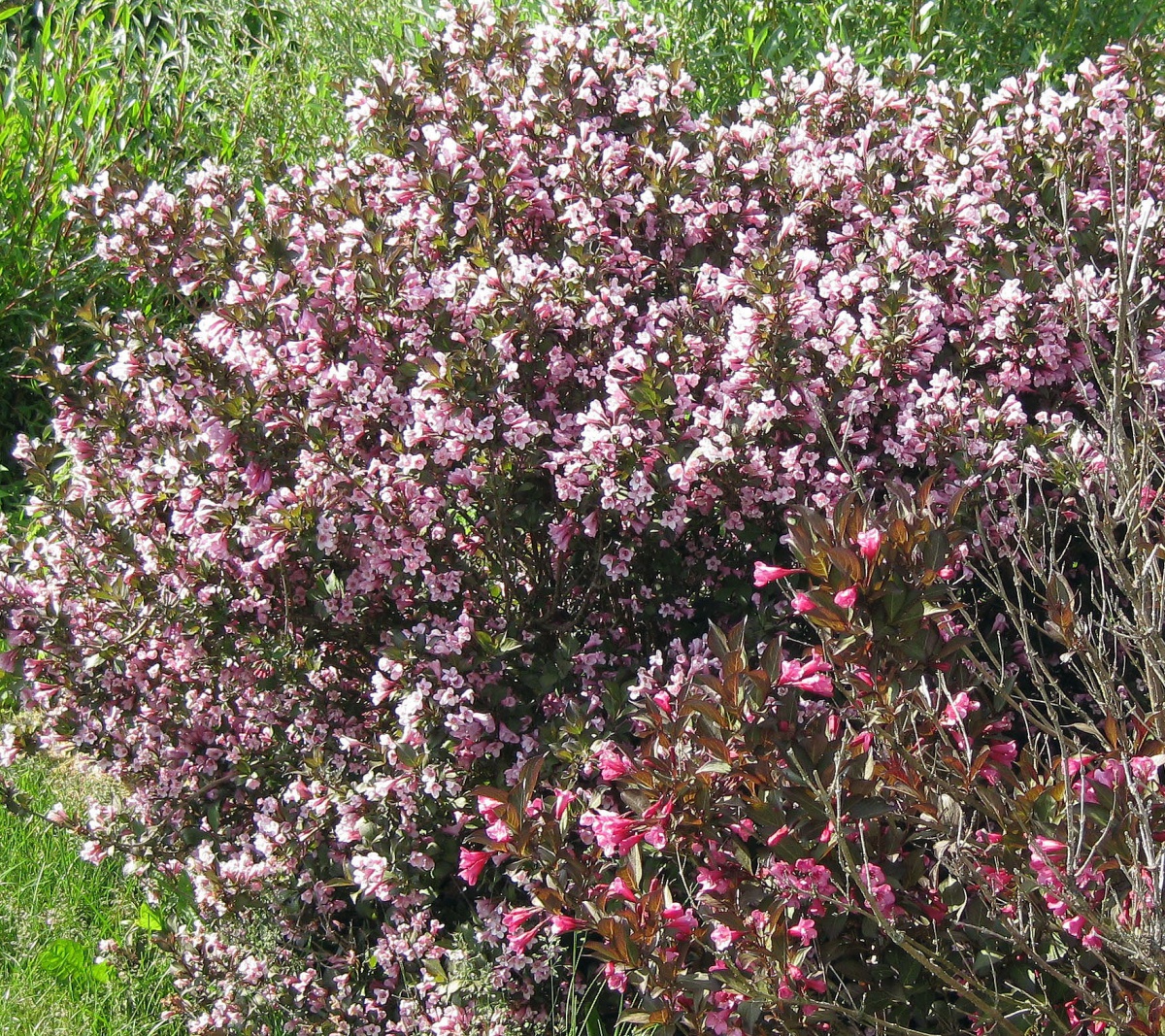
Slender deutzia (Deutzia gracilis) This is another good match for the low, broad mounding form of Japanese barberry, normally 2-4 feet tall and wide but new ground-cover types (1-2’) are now being marketed. It is a graceful low shrub with abundant white (or pink) flowers in spring and some show attractive burgundy fall color. Suitable for zones 5 and 6, not native to the U.S., the plant is tough and adaptable, and very ornamental when in bloom in the spring.
Atlantic (or common) ninebark (Physocarpus opulifolius) Hardy to zone 3, this durable and adaptable shrub is an upright grower, coarse in texture. There are a number of purple leaved cultivars available on the market, with variable sizes ranging from 3’-10’ high. All have white flowers in midsummer and attractive peeling bark although it’s hard to see because of the dense growth. Cut them back in winter to keep plants more compact. A good native plant for bird shelter and pollinator support.
Shrub roses (Rosa species and hybrids) Hardy shrub roses can substitute for the dense, mounding form of barberry, but the flowers make roses a focal point in the landscape. There are now hundreds of shrub roses for landscape use that are more reliable than grafted or hybrid tea roses and provide a long bloom season without requiring dead-heading. None are native except for Virginia rose, which is tall and thorny, and nearly all the roses have green leaves rather than burgundy. Proper selection and placement is critical if you want to minimize maintenance, since they vary widely in size and form.
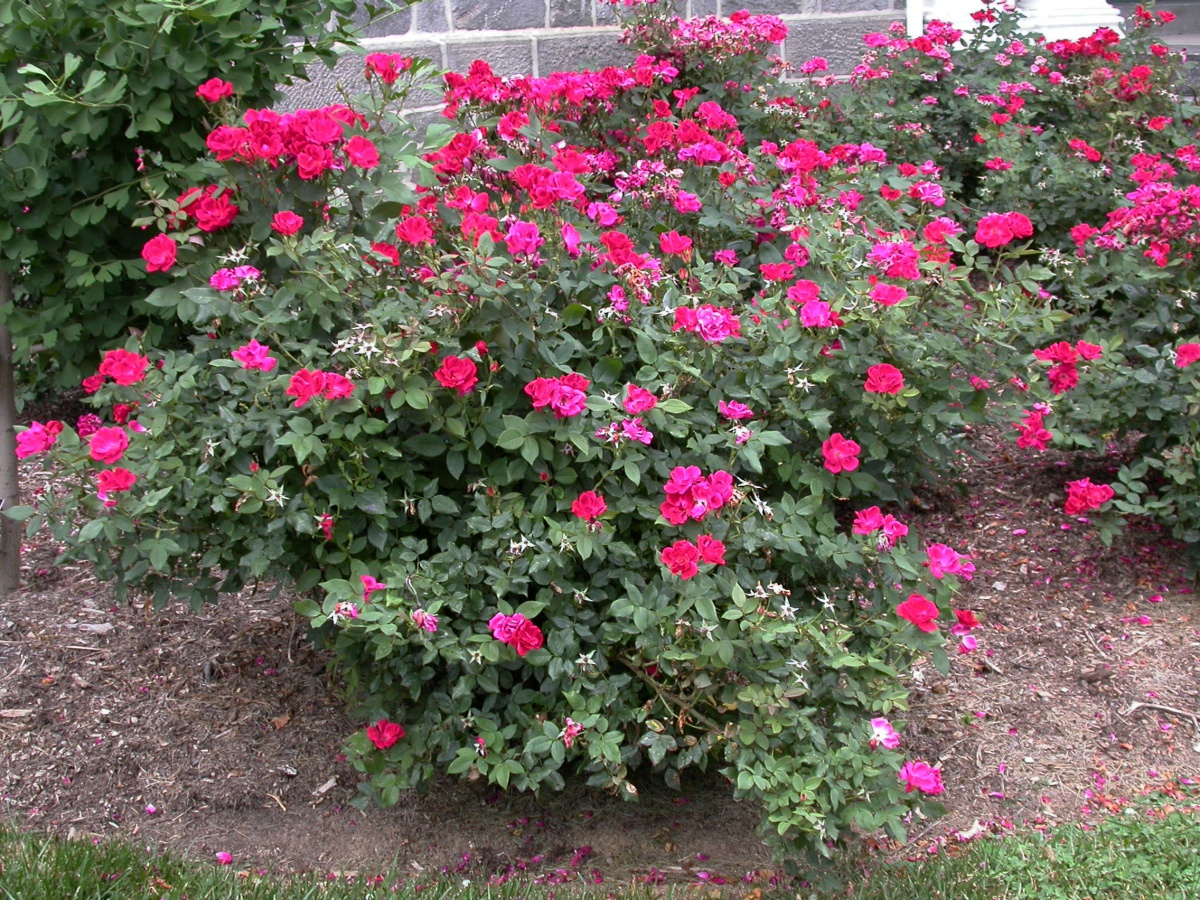
Do not buy roses grafted onto Rosa multiflora rootstock, as multiflora rose is a prohibited invasive plant in New Hampshire. Many roses are still subject to Japanese beetles and diseases such as black spot and powdery mildew, although improved disease resistance is claimed by many types. Winter hardiness may also vary greatly, so seek out types developed in northern U.S. or Canada. Rose hips make good winter food for birds and mammals, and the dense thorny branches provide excellent nesting cover for songbirds.
A few more deciduous native shrubs you might consider using in place of burning bush or Japanese barberry include sweet pepperbush (Clethra alnifolia), small bayberry (Morella caroliniensis) and fragrant sumac (Rhus aromatica).
Alternatives for Norway maple (Acer platanoides)
Norway maple, introduced from Europe in 1756, became one of the most frequently planted street trees in the eastern and north central regions of the United States. Its popularity can be explained by its rapid early growth rate, site adaptability, ease of transplanting, and tolerance of urban conditions including exposure to road salt. The cultivar ‘Crimson King’ has attractive maroon-red leaves all summer and became a favorite shade tree for home and commercial landscapes.
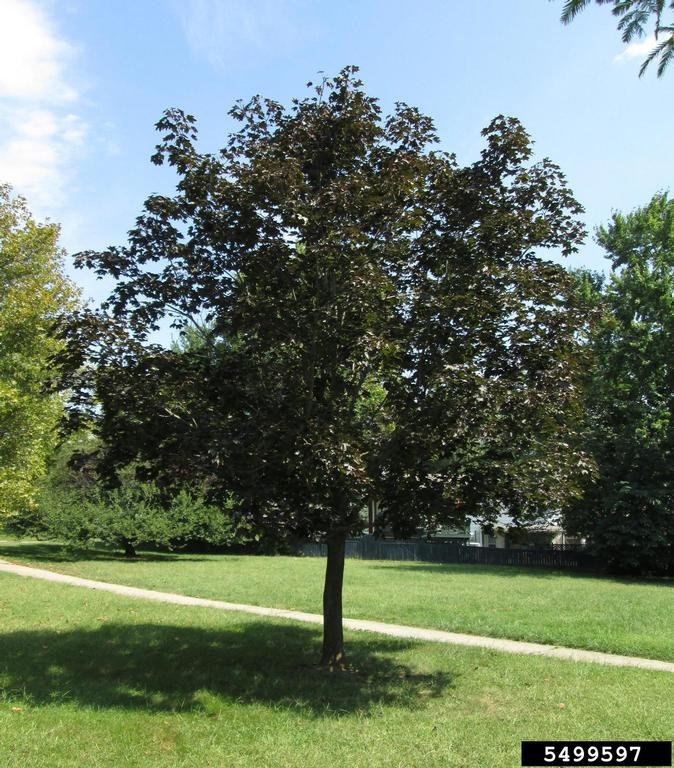
When selecting an alternative for this large-growing, attractive shade tree, consider the conditions at the intended planting site. While there is no shortage of desirable tree species to choose from, most are not as widely adaptable and tolerant as Norway maple.
Some salt tolerant shade trees hardy to zone 3
Red maple (Acer rubrum) has red spring color when in bloom, turning green as the foliage appears. Although red maple is native throughout much of the eastern U.S., cold hardiness of seedlings or grafted varieties is not always consistent and it is important to purchase plants from grown from northern stock. Red maple will tolerate wet soils and a moderate amount of salt, unlike sugar maple. Red maple reaches 75’ tall by 60’ wide at maturity.
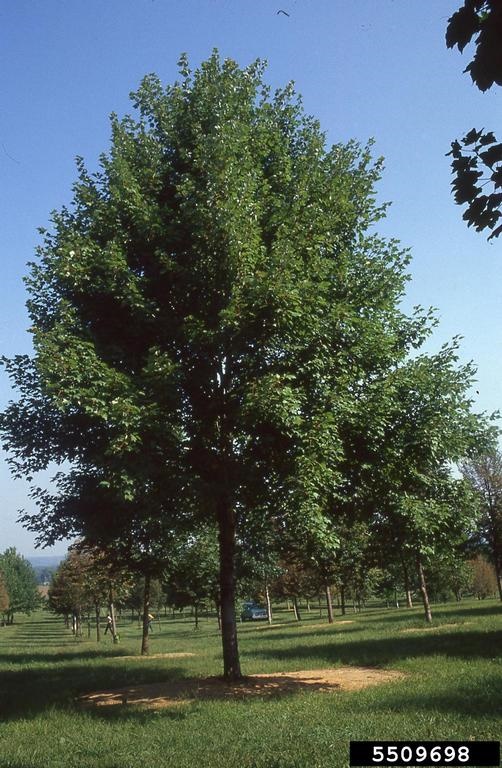
Northern red oak (Quercus rubra). Another large tree, 75’ tall by 60’ wide, northern red oak is sometimes difficult to establish and slow to start growing, but makes a nice green shade tree for lawn areas or parks. It is one of New England’s most common, native forest trees, but needs deep soil and may develop chlorosis in urban soils with high pH. The prolific acorns may be an annoyance to some people, but the squirrels love them.

Gingko (Gingko biloba) is slow-growing but very long lived once established and has a nice, clear yellow fall color. It is salt, heat and drought tolerant, making it a good urban tree if given adequate room to grow. The tree will often reach 75’ tall by 40’ wide, sometimes larger. Most Gingko in the nursery trade are male clones because female trees have malodorous fruit. Native to China, it is one of the oldest tree species still in existence, said to be 150-200 million years old.
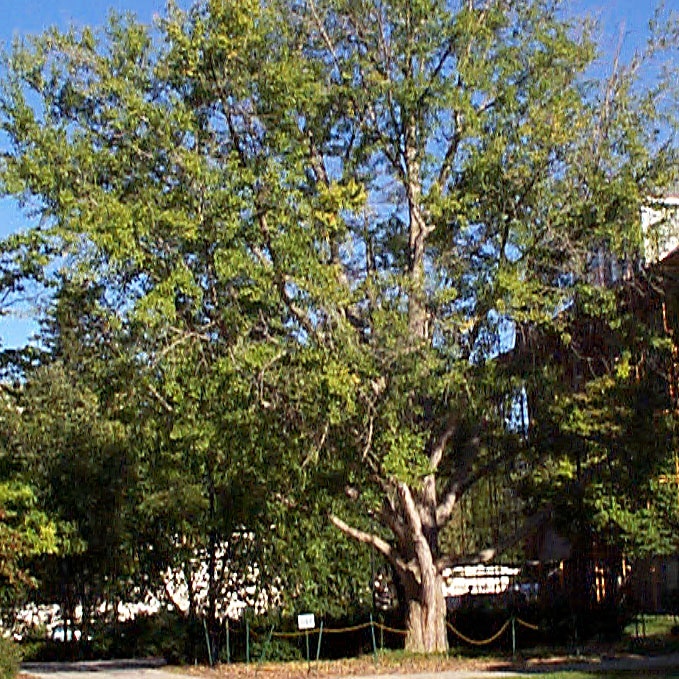
Japanese tree lilac (Syringa reticulata) is a good choice for a smaller tree; perhaps as large as 30’ x 20’ at maturity, but smaller cultivars are available. It can tolerate high pH soils. has lilac-type white blossoms in mid-summer (but lacks a desirable fragrance) and attractive cherry-like bark. ‘Ivory Silk’ and a few other cultivars are popular selections for more compact form and prolific bloom. It is not native and has been reported to become weedy in some circumstances. Of course, common lilac (Syringa vulgaris) can also be planted but generally forms a large multistemmed shrub rather than a tree form.

Some red-leafed trees
Some red-leafed trees European beech (Fagus sylvatica). Numerous green leaved selections of this tree are available, but ‘Riversii’ European beech is one of the few large shade trees with purple leaves. This tree becomes enormous over time, at least 60’ tall by 45’ wide, so should not be used as a street tree or in other areas with limited growth potential. The nuts provide excellent wildlife food and the bark is grey and smooth like an elephant’s hide.
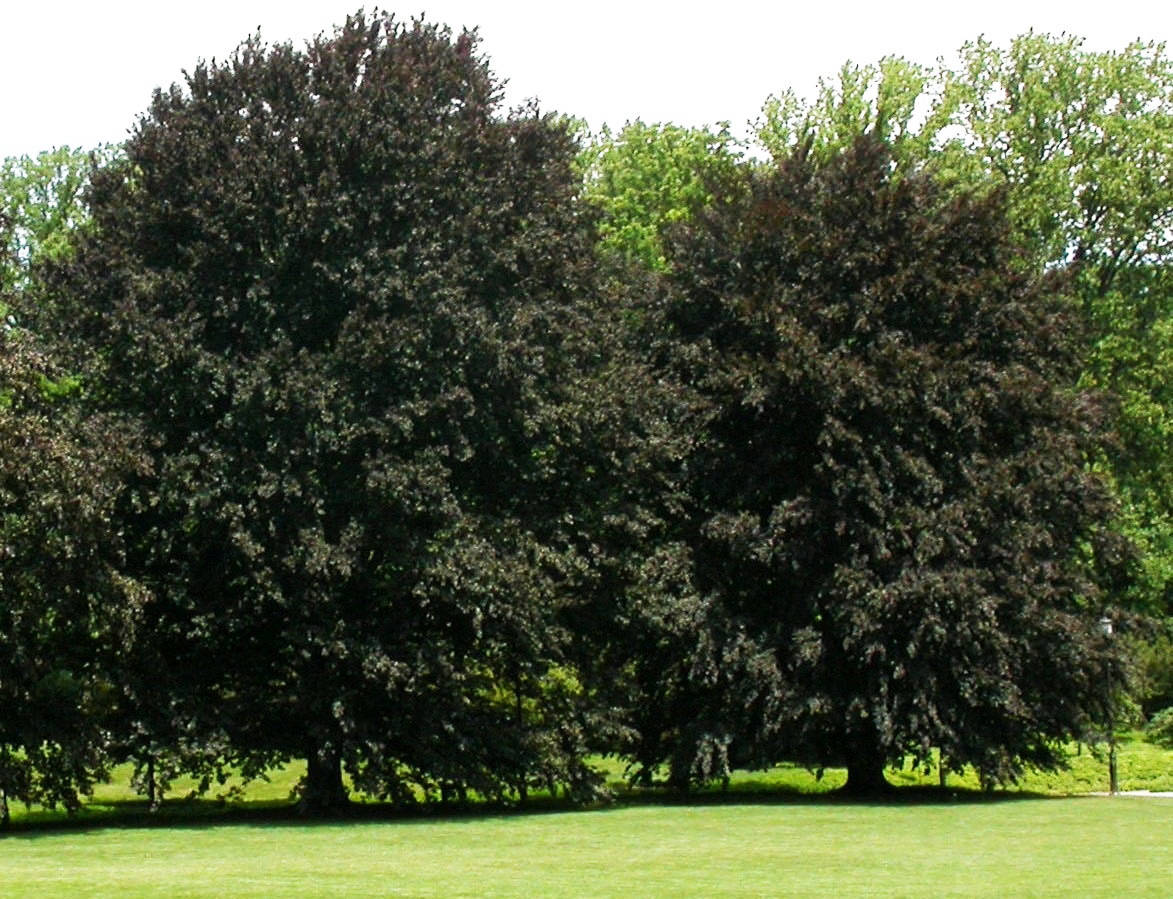
Flowering crabapple (Malus species and hybrids) or purple leaf plum (Prunus cerasifera). For those who must have a purple-leaved tree, a few cultivars of flowering crabapple or plum fit this order. These are all much smaller than Norway maple, generally15’-30’ high and 15’-25’ wide at maturity. Choose disease-resistant cultivars where possible, and prepare to tolerate insect pests such as Eastern tent caterpillar, as well as susceptibility to several diseases which could cause the trees to be short-lived. Plums especially are often subject to winter injury, so are best planted in zone 5 or 6, whereas most crabapples are suitable into zone 4. Although not native, both Malus and Prunus are beautiful in bloom and they provide fruit and cover for birds and other animals.
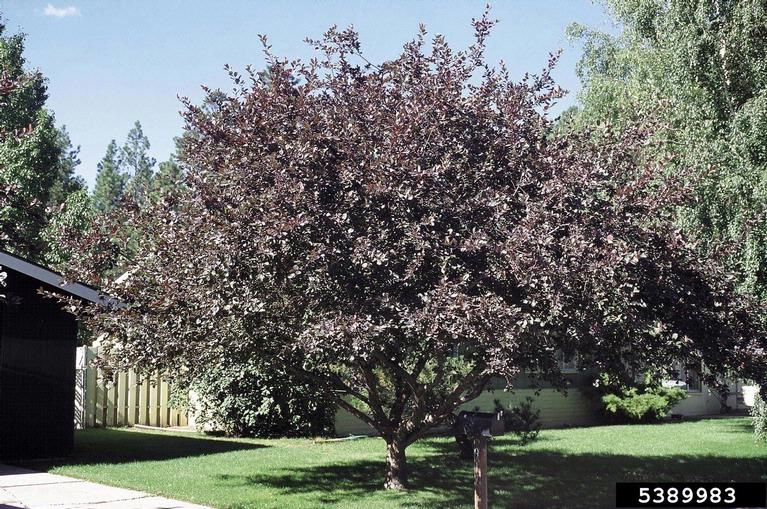
Photo credits
1 Leslie J. Mehrhoff, University of Connecticut, Bugwood.org
2 David Stephens, Bugwood.org
3 T. Davis Sydnor, The Ohio State University, Bugwood.org
4 Mark Brand, University of Connecticut Plant Database
5 Tom DeGomez, University of Arizona, Bugwood.org Use of photos from Bugwood.org are licensed under a Creative Commons Attribution-Noncommercial 3.0 License.
All other photos are by the author.
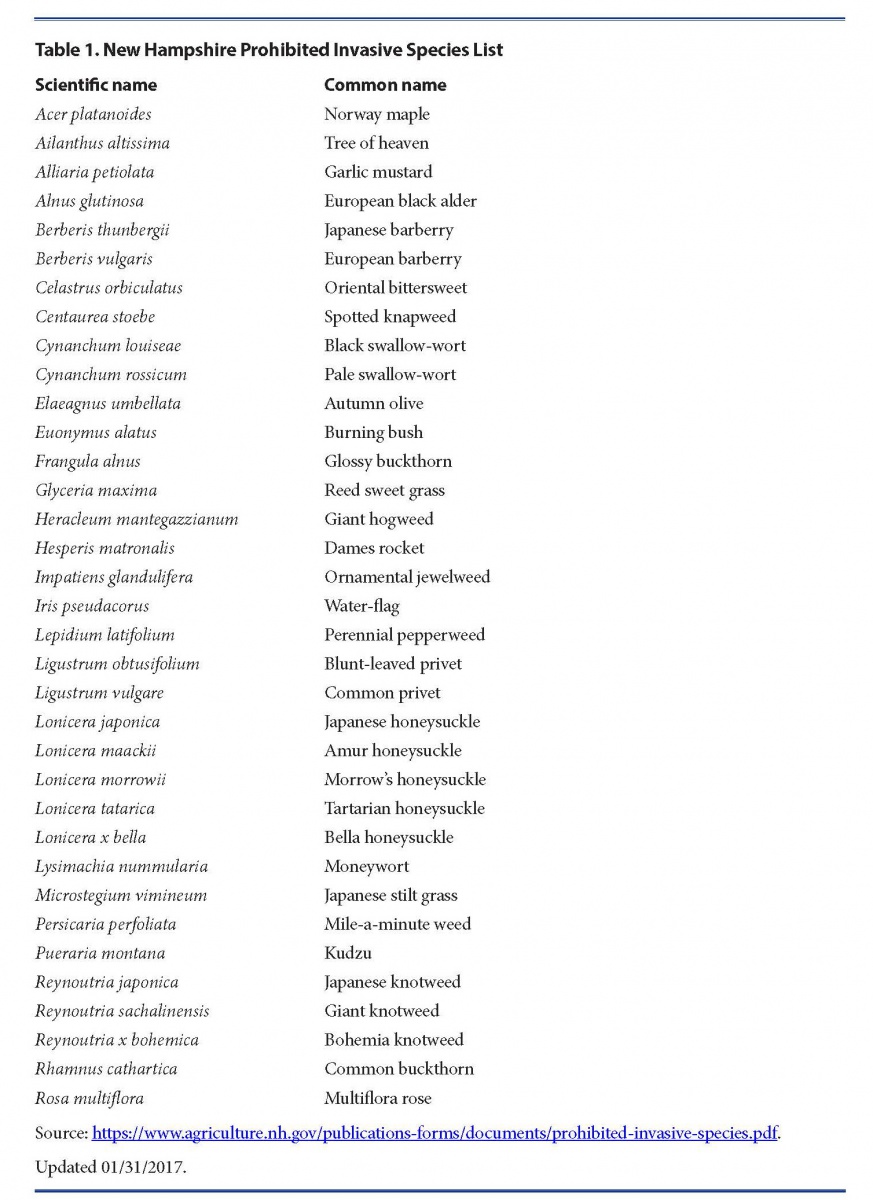
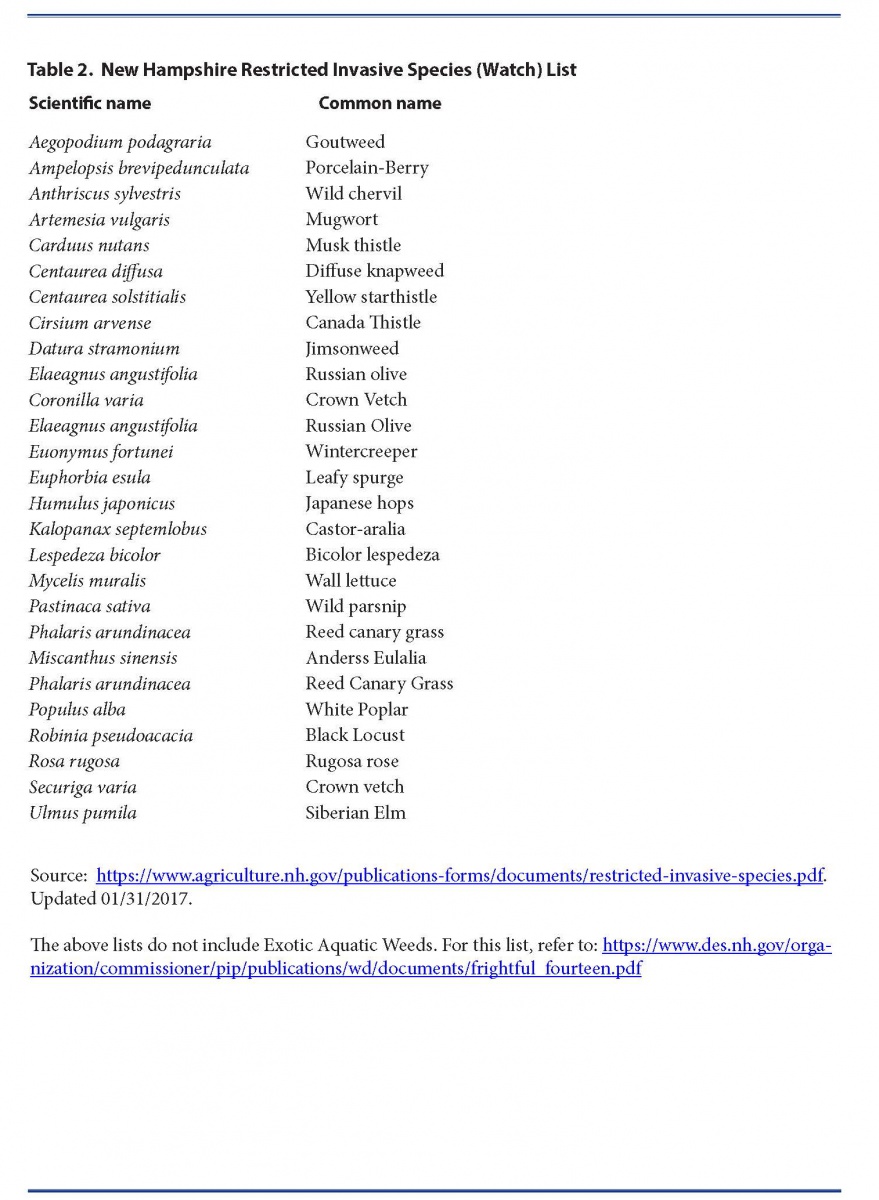
Download the Resource for the complete fact sheet and a printable version.
